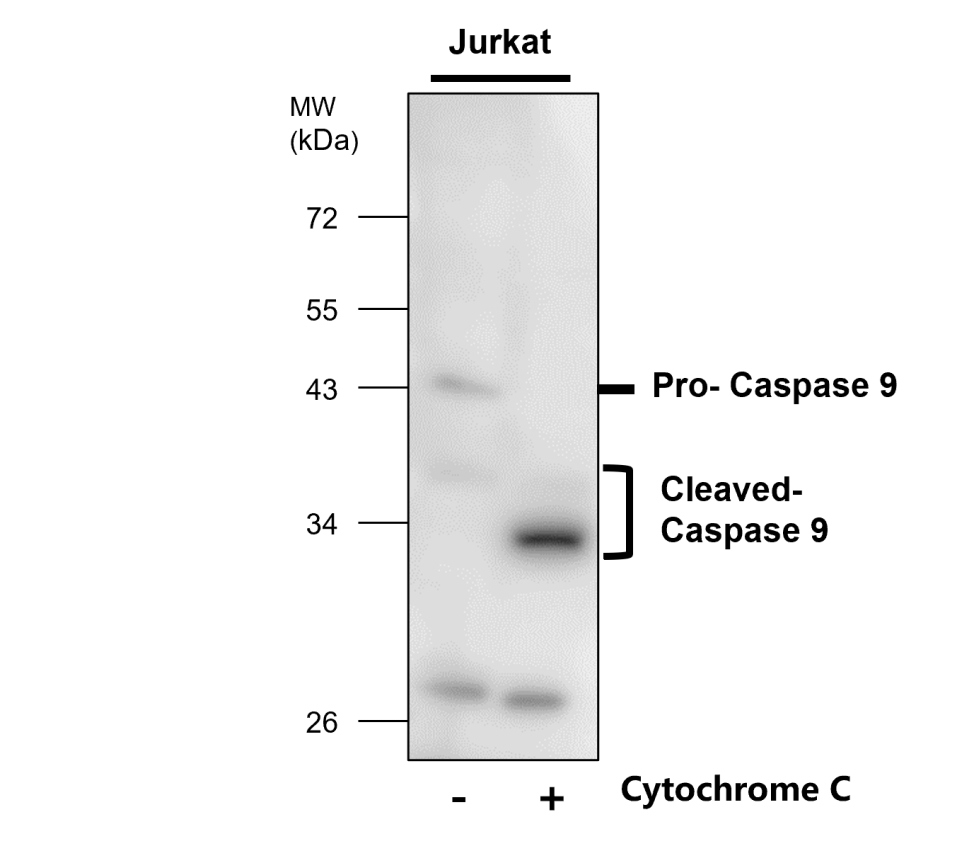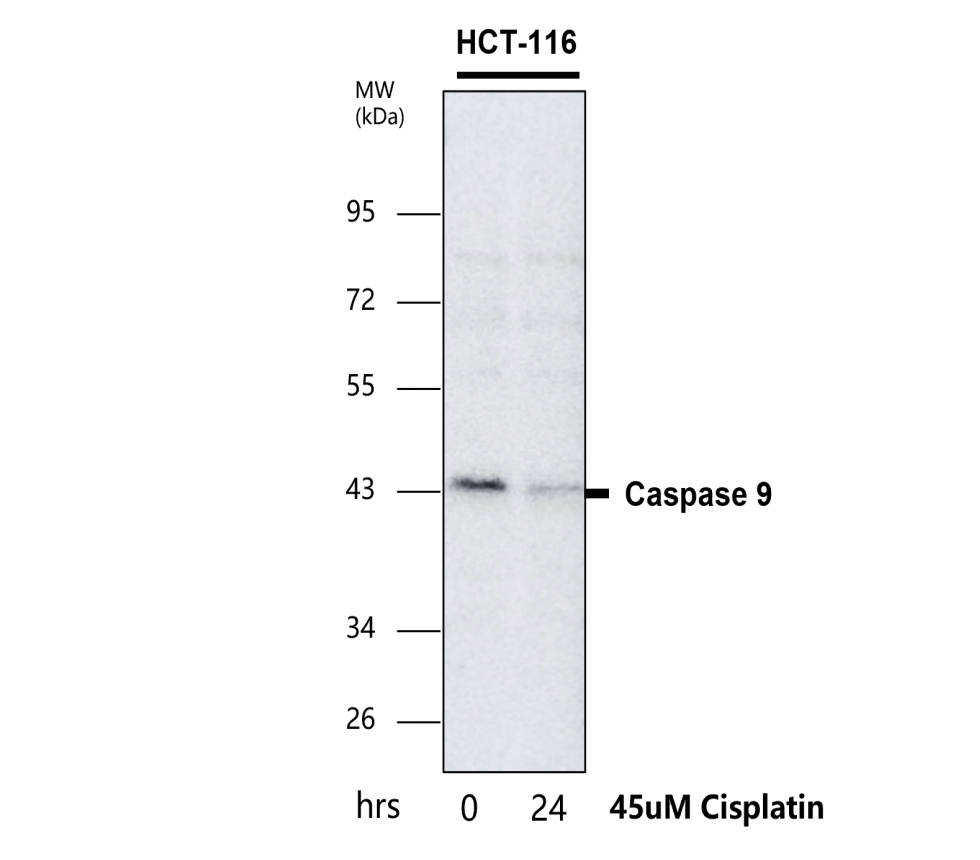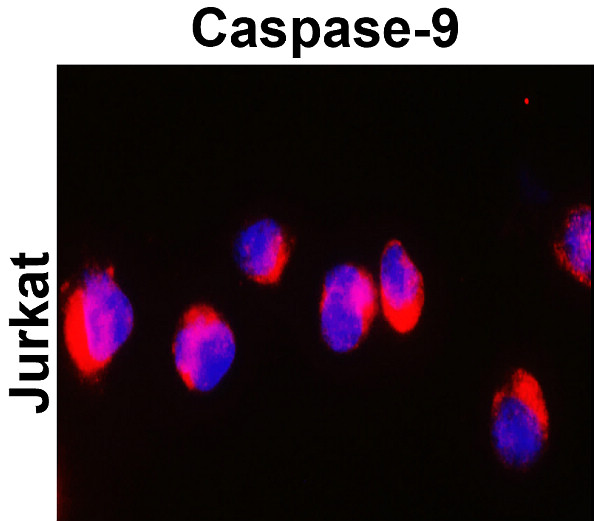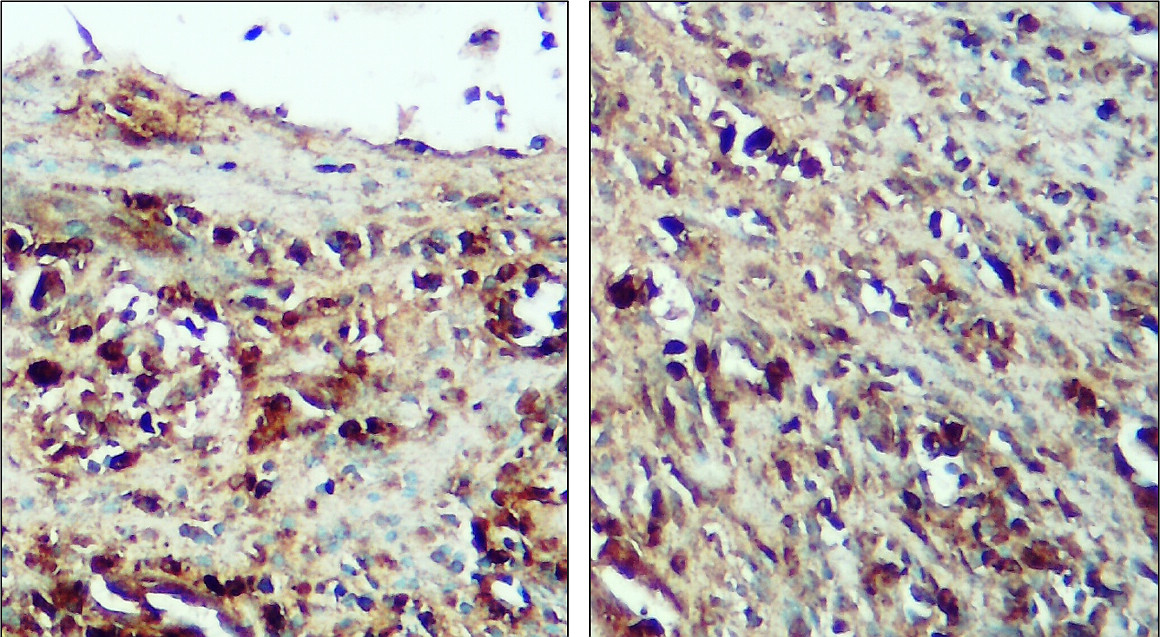



Product Includes
Application Dilution
Immunofluorescence 1:300-1:400
Immunohistochemistry (Paraffin) 1:100-1:300
Storage
100mM Tris Glycine, 20% Glycerol (pH7). 0.025% ProClin 300 was added as a preservative
Specificity / Sensitivity
Source / Immunogen
This gene encodes a member of the cysteine-aspartic acid protease (caspase) family. Sequential activation of caspases plays a central role in the execution-phase of cell apoptosis. Caspases exist as inactive proenzymes which undergo proteolytic processing at conserved aspartic residues to produce two subunits, large and small, that dimerize to form the active enzyme. This protein can undergo autoproteolytic processing and activation by the apoptosome, a protein complex of cytochrome c and the apoptotic peptidase activating factor 1; this step is thought to be one of the earliest in the caspase activation cascade. This protein is thought to play a central role in apoptosis and to be a tumor suppressor. Alternative splicing results in multiple transcript variants. [provided by RefSeq, May 2013]
| Title | |
|---|---|
| 1 |
Application
Reactivity Human
|
| 2 |
Application
Reactivity Mice
|
| 3 |
Application
Reactivity Human
|
| 4 |
Application
Reactivity Human
|








